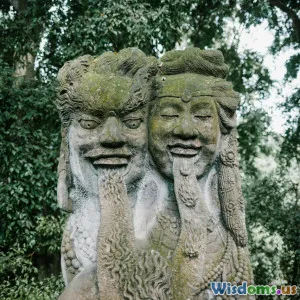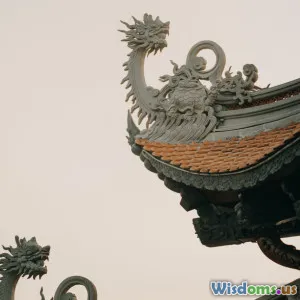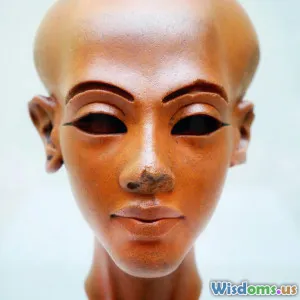
Mythical Creatures: Fact or Fiction in History
7 min read Explore the fascinating blend of fact and fiction behind mythical creatures throughout history. (0 Reviews)
Mythical Creatures: Fact or Fiction in History
Introduction
The world of mythical creatures has captivated human imagination for millennia. Dragons breathing fire, the graceful unicorn roaming enchanted forests, or the terrifying Kraken lurking beneath ocean waves—these beings populate stories, art, and folklore worldwide. But how much of these fantastical creatures are rooted in reality? Are minerals, animals, or ancient human experiences the basis for these myths, or are they purely products of imagination? In this article, we journey through history to unravel the origins of mythical creatures, examine the blurred lines between fact and fiction, and explore what these legends reveal about the cultures that nurtured them.
Ancient Origins: When Myth Meets Reality
Fossils and Misinterpretations
One compelling theory behind many mythical beasts is the ancient discovery of fossils. Long before paleontology was a science, civilizations unearthed large bones of prehistoric creatures. Without scientific context, these remains may have sparked stories of giants, dragons, or monstrous beasts.
For example, some scholars suggest that dinosaur fossils found in regions like China or the American Midwest were interpreted as petrified dragons or giant animals by locals. The Chinese dragon, a symbol rich in culture, shares some serpentine and horned features reminiscent of dinosaur skeletons, which fueled these legends.
Similarly, the Cyclopes of Greek mythology—one-eyed giants—might be explained by the skulls of prehistoric elephant ancestors, where the central nasal cavity was mistaken for a single eye socket.
Real Animals as Inspiration
Many mythical creatures appear as exaggerated or hybridized versions of real animals.
- The Griffin: Depicted as part lion, part eagle, it closely resembles fossil remains or encounters with unfamiliar birds and big cats from ancient trade routes, particularly the bones of large extinct reptiles or protoceratops.
- Unicorns: Some historians argue that travelers’ tales of the Indian rhinoceros, described as a powerful single-horned creature, inspired the European unicorn myths.
These examples reveal how observations of unfamiliar wildlife often spawned legendary descriptions embellished through oral storytelling.
Mythical Creatures in Cultural Context
Symbolism and Social Meaning
Mythical creatures were not just the products of misinterpreted evidence but were heavily reliant on symbolism. In many cultures, they embodied ideals, fears, and moral lessons.
- Dragons: In Eastern cultures like China and Japan, dragons symbolize power, wisdom, and good fortune. Contrastingly, in much of Western mythology, dragons often represent chaos or evil, seen as adversaries for brave heroes to conquer, such as St. George.
- Phoenix: This immortal bird symbolizes rebirth and renewal, playing a pivotal role in ancient Egyptian and Greek myths as a metaphor for the cyclical nature of life.
These creatures are not mere fictional beasts; they are living symbols embedded in religious, political, and societal frameworks.
Historical Accounts and Legendary Claims
Throughout history, explorers and scholars recorded encounters with creatures blending factual reports with fantastical additions.
- Marco Polo’s Chronicles: Polo’s descriptions of unicorns appeared to be rhinoceroses but were relayed with mythical exaggerations, spreading the unicorn’s legend in medieval Europe.
- The Kraken: Inspired possibly by giant squid sightings, sailors’ accounts transformed this deep-sea giant into a legendary, tentacled monster capable of dragging ships under the sea.
These narratives demonstrate how exploration and limited scientific knowledge merged to propagate legendary creatures.
Scientific Perspectives and Modern Discoveries
Evolution of Understanding
With the rise of paleontology, biology, and archaeology from the 18th century onwards, many creatures once deemed mythological found scientific explanations or were reclassified as myth.
- Fossil discoveries clarified the existence and extinction of giant reptiles and mammals, debunking some mythical origins.
- Animals like the giant squid, once thought mythical, have been proven real thanks to technological advances.
Cryptids and Ongoing Mysteries
Despite scientific advances, some creatures remain in a liminal space between myth and reality, embraced by the field of cryptozoology—the search for hidden animals.
Examples include:
- Bigfoot: Footprints and anecdotal sightings have been reported predominantly in North America, but no conclusive evidence exists.
- Loch Ness Monster: Despite numerous investigations, photographic and sonar evidence remains inconclusive, yet the legend thrives.
Scientific skepticism challenges such claims but the cultural fascination with these creatures endures, highlighting the human penchant for mystery and wonder.
Conclusion: Why Mythical Creatures Matter Today
Mythical creatures serve as windows into how ancient peoples interpreted their world, blending fact with fiction to instill meaning and inspire wonder. While many have roots in misunderstood fossils, real animals, or historical encounters, their evolution across cultures adds layers of symbolism and significance.
Today, these legends continue to captivate, reminding us of the stories we tell to explain the unknown. They challenge our perceptions of reality, encourage scientific inquiry, and enrich our cultural heritage. Whether fact or fiction, mythical creatures embody humanity’s boundless creativity and quest to make sense of the mysterious world around us.
By understanding their origins and significance, we appreciate not only mythology but also the ever-evolving relationship between history, science, and imagination.
References and Further Reading
- Adrienne Mayor, The First Fossil Hunters: Paleontology in Greek and Roman Times (Princeton University Press, 2000).
- Deborah Noyes, Fantastic Creatures in Mythology and Folklore (Lerner Publications, 2018).
- Richard Ellis, The Search for the Giant Squid: The Biology and Mythology of the World's Most Elusive Sea Creature (Penguin Books, 1998).
- Marine Cryptozoology Society - https://cryptids.fandom.com/wiki/Marine_Cryptids
Rate the Post
User Reviews
Other posts in Mythical Creatures
Popular Posts
















